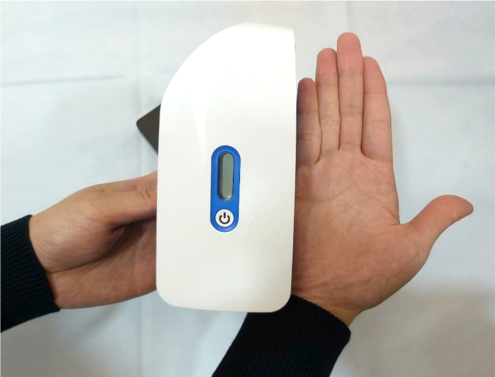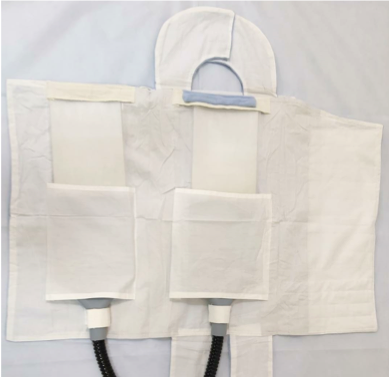Jaundice Baby…Home Phototherapy…Safe & Easy




Japanese encephalitis (JE) is a vector-borne zoonotic viral disease. JE virus (JEV) is the leading cause of viral encephalitis in Asia. JE occurs in nearly all Asian countries, whether temperate, subtropical, or tropical, and has intruded into new areas through importation of infected vectors. Currently, an estimated 3 billion people live in the 24 countries, mainly in the WHO South-East Asia and Western Pacific Regions, considered at risk of JE.1
In temperate locations, the period of transmission of JEV typically starts in April or May, and lasts until September or October. In tropical and subtropical areas, transmission exhibits less seasonal variation, or intensifies with the rainy season.20
As JE surveillance is not well established in many countries, and laboratory confirmation is challenging, the true extent and prevalence of the virus and burden of disease are not well understood. It is estimated that 67 900 clinical cases of JE occur annually despite widespread availability of vaccine, with approximately 13 600 to 20 400 deaths, and an overall incidence rate of 1.8/100 000 in the 24 countries with JE risk.1
JEV is transmitted through a zoonotic cycle between mosquitoes, pigs and water birds. Humans get accidentally infected when bitten by an infected mosquito and are a dead end host. Humans do not participate in the spread of JE because of low level and short-lived viremia.2

Symptoms usually start at around 4-14 days after being infected. Mild infections may occur without apparent symptoms other than fever with headache. More severe infection is marked by quick onset of headache, high fever, neck stiffness, impaired mental state, coma, tremors, occasional convulsions (especially in children) and paralysis.
There is no specific treatment for this disease. Supportive therapy is indicated. Death rates may range from 5% to 35%. Patients who survive may have neurological consequences.
WHO recommendations: JE vaccination should be integrated into national immunization schedules in all areas where JE is recognized as a public health priority. Even if the number of JE-confirmed cases is low, vaccination should be considered where there is a suitable environment for JEV transmission, i.e. presence of animal reservoirs, ecological conditions supportive of virus transmission, and proximity to other countries or regions with known JEV transmission.1
Besides, to prevent contracting the disease, one should take general measures to prevent mosquito bites, apply effective insect repellents (containing DEET) to exposed parts of the body and avoid going to rural areas from dusk till dawn when the mosquitoes spreading this virus are most active.22
Reference:
In most countries, meningococcus is recognized as a leading cause of meningitis and fulminant septicaemia. It is classified into 12 serogroups based on the structure of the polysaccharide capsule. The majority of invasive meningococcal infections are caused by organisms expressing one of the serogroup A, B, C, X, W135 or Y capsular polysaccharides.
Neisseria species, which usually reside asymptomatically in the human nasopharynx, are easily transmitted to close contacts by respiratory droplets. Nasopharyngeal carriage of potentially pathogenic N. meningitidis has been reported in 4%–35% of healthy adults.1
Symptoms of invasive meningococcal disease (IMD) usually occur 1–4 days after infection. Signs and symptoms of IMD in infants and young children include fever, poor feeding, irritability, lethargy, nausea, vomiting, diarrhoea, photophobia and convulsions. The characteristic feature of meningococcal septicaemia is a hemorrhagic (petechial or purpuric) rash that does not blanch under pressure. Signs of meningitis in older children and adults include neck rigidity, photophobia and altered mental status, whereas in infants non-specific presentation with fever, poor feeding and lethargy is common. Besides meningitis and septicaemia, meningococci occasionally cause arthritis, myocarditis, pericarditis and endophthalmitis.
Most untreated cases of meningococcal meningitis and or septicaemia are fatal. Even with appropriate care up to 10% of patients die, typically within 24–48 hours of the onset of symptoms. Approximately 10% to 20% of survivors of meningococcal meningitis are left with permanent sequelae such as mental retardation, deafness, epilepsy, or other neurological disorders.
The disease is mainly transmitted by direct contact through respiratory secretions from infected persons.
Meningococcal infection is a serious illness. Patients should be treated promptly with antibiotics. Close contacts would need to be placed under medical surveillance for early signs of disease and may be given preventive medications.
Maintain good personal and environmental hygiene.
WHO recommendations: In countries where the disease occurs less frequently, meningococcal vaccination is recommended for defined risk groups, such as children and young adults residing in closed communities, e.g. boarding schools. Travellers or overseas students to high-endemic areas should be vaccinated against the prevalent serogroup(s). In addition, meningococcal vaccination should be offered to all individuals suffering from immunodeficiency, including asplenia, terminal complement deficiencies, or advanced HIV infection. Meningococcal vaccines against A, C, W, Y serogroup and vaccine against B serogroup are now registered in Hong Kong.
Hepatitis A is a viral hepatitis caused by the Hepatitis A virus. It is transmitted via intake of contaminated food (e.g. undercooked shellfish) or drinking water. Symptoms include diarrhoea, vomiting, fever and jaundice. Hepatitis A infection does not cause chronic liver disease and is rarely fatal, but it causes debilitating symptoms and fulminant hepatitis, which is associated with high fatality rates.
There is no specific treatment for hepatitis A. Therapy is aimed at maintaining comfort and adequate nutritional and fluid balance. Immunization is effective in preventing Hepatitis A infection and is recommended to residents and travelers to endemic regions (e.g. Mainland China, south-east Asia).
Rotavirus damages the cells on the hair-like projections of the small intestine, reducing their ability of absorption, causing diarrhoea. It is the leading cause of severe, dehydrating diarrhoea in children under the age of 5 years globally. Features of the disease include fever, vomiting and watery diarrhoea. The disease lasts for 3-7 days and young children are at particular risk of dehydration.
Rotavirus is highly contagious. It is transmitted via fecal-oral route, through consumption of contaminated food or water, or by contact with contaminated surface. To date there is no drug available as specific treatment to Rotavirus. Supportive treatment, such as intravenous fluids administration to prevent dehydration and antipyretics, are mainstay of treatment. Disease can be prevented by oral vaccines available to infants.
Vaccines are available in 2-dose or 3-dose from. Infants can be vaccinated from 6 weeks of age. Depend on the brand chosen, the schedule need to be completed by 24 weeks or 32 weeks.
Haemophilus influenzae is a bacterium that causes severe invasive infections such as pneumonia, otitis media, acute epiglottitis and meningitis. It may be present in nasopharynx or healthy adults and transmitted to vulnerable persons via respiratory droplet or contact of contaminated surfaces. 90% of invasive Hib disease affect children under the age of 5 years. Getting vaccinated is an effective way to prevent Hib disease.
Hib vaccine is incorporated into national vaccination scheme in various countries/ regions. To date, it is however not yet included in “Hong Kong Childhood Immunization Programme” by Department of Health. Hib vaccine is included in 5-in-1 or 6-in-1 combined vaccines. It is also available as standalone vaccine. Children can get vaccinated in private clinics.
專注力不足∕過度活躍症的主要徵狀包括專注力弱、 過度活躍和行為較衝動。
根據DSM V的診斷準則,徴狀必須最少持續6個月,並於12歲前出現,而且在多於2個環境下符合診斷準則(如在家, 學校,與朋友相處)及影響到社交、學業或工作。
徴狀包括:
專注力不足的徵狀:
過度活躍、衝動行為的徵狀:
根據以上診斷準則,大致可分為三類:
這些徵狀容易對孩子的學習和社交生活上造成一定的困難,甚至可能導致影響情緒或自我形象。硏究發現,部分徵狀較明顯及持續至成年階段的患者,可能會影響工作,及增加人際衝突、打架、濫藥等情況。以往這些孩子可能被誤解,被標標籤為「百厭」或「懶散」。然而通過對專注力不足∕過度活躍症的了解,並及早為孩子進行評估和適切的治療,可以大大減低對孩子的學習和日常生活的影響。
根據美國疾病控制中心2016年統計的數據,約9.4% 的兒童患有此症,而男生比例較多(男童12.9%,女童5.6%)。在香港,根據衞生署兒童體能智力測驗服務的資料顯示,在 2016 年確診的新症中, 男女比例約為 3 比 1。
專注力不足∕過度活躍症並不是單一成因,遺傳是其中一個重要因素,如家族中有成員,尤其父母及兄弟姊妹確診,患專注力不足∕過度活躍症的機會比一般人為高。
根據研究顯示,患專注力不足∕過度活躍症的腦部結構及功能有以下異常:
這些異常,影響腦部負責執行功能的區域,令患者的工作記憶、專注力、行為與情緒的控制、安排及組織工作的能力較弱,導致專注力不足及過度活躍的徴狀。
家庭的管教及環境並不會導致專注力不足∕過度活躍症,但會影響病情的嚴重程度、影響行為及對生活造成影響。
患有專注力不足∕過度活躍症的兒童於兒童時期可能導致發生意外或受傷的機會增加,亦於求學階段影響學習。於人際關係方面,亦可能因為欠缺耐性而容易與人產生磨擦。孩子有機會因為學習及社交上的挫敗而産生焦慮,抑鬱等情緒問題,更有機會影響個人自信。部分兒童可能同時患上其他發展障礙,例如讀寫障礙、發展性協調障礙或其他行為及情緒問題(如焦慮症)。成年的患者,可能會影響工作,及增加人際衝突、打架、濫藥、情緒問題等情況。
根據研究,藥物治療及行為治療為最有效的治療方法,而兩者合併治療的效果更遠超於單一方法。對於六歲或以上的患者而徵狀比較嚴重,藥物治療能改善的專注力,及減低過度活躍及衝 動等徵狀;而兒童的行為,尤其學習上的問題及反叛性的行為,必須配合適當的行為治療,針對性的教學方法及家長有效的管教方法去改善。
六歲以下的兒童,由於未有太多大型研究及數據支持藥物治療用於這個年齡層,行為治療為主要治療方案,目標是訓練情緒處理技巧,提升人際關係技巧,提升解難技巧等。行為治療亦要佩合家長的正面及有效的管教技巧,以及老師在學校的適當教學策略。例如:活動前給予淸晰目標及指引,把工作步驟拆開,步驟之間給予適當的休息時間,持續鼓勵及予以讚賞,工作或活動時減低外界或週邊的干擾,減少造成分心的機會。課堂上,老師可安排孩子坐位較為接近老師,多給予口頭或視覺提示,或安排能給予孩子提點的同學坐在附近。亦可安排一些小任務給孩子,讓他/她更投入課堂及增加自信心。
嚴重個案而行治療未能有效改善徵狀,則可能需要加上藥物治療。
藥物治療方面,主要為為兩類。大部分情況中樞神經刺激劑為首選,目的為提升腦神經傳導物質「多巴胺」,以達至提升的專注力。常用藥物有「哌醋甲酯」 (methylphenidate),如「利他林」 (Ritalin) 及「專注達」(Concerta)。研究顯示,75%的患者服藥後專注力有明顯改善,過度活躍及衝動行為亦減少。藥物有長效及短效,醫生會按兒童的情況及需要而選擇。
藥物常見的副作用,包括食慾不振、失眠、影響睡眠質素、難於入睡、腸胃不適、作嘔、肚痛、體重下降、肌肉抽搐、頭痛、情緒低落或焦慮,煩躁不安等。不過,這些副作用通常都
是輕微和短暫的,一般可以調教劑量及服藥時間而改善。
另一類藥物為非中樞神經刺激劑,一般用於中樞神經刺激劑無效的個案,如「抗抑鬱劑」 (Clonidine, Imipramide 「丙咪嗪」,「阿托莫西汀」(atomoxetine)(「斯得瑞」(Strattera)。
若家長懷疑孩子有專注力不足∕過度活躍症,可以尋求兒科醫生或精神科醫生進行詳細的發展及行為評估,並為確診專注力不足∕過度活躍症的兒童提供藥物治療及安排適當的行為治療。學前兒童如同時確診其他發展障礙,如學習障礙等,可經由兒科醫生或臨床心理學家轉介輪候社會福利署轄下的早期教育及訓練中心(EETC),到校服務(OPRS)、幼稚園暨幼兒中心兼收弱能兒童計劃(ICCC)接受訓練。
教育局亦會為學齡兒童安排教育心理學家為教師和兒童在校內提供支援。坊間亦不少非政府機構亦有舉辦兒童行為培訓和提供家長支援